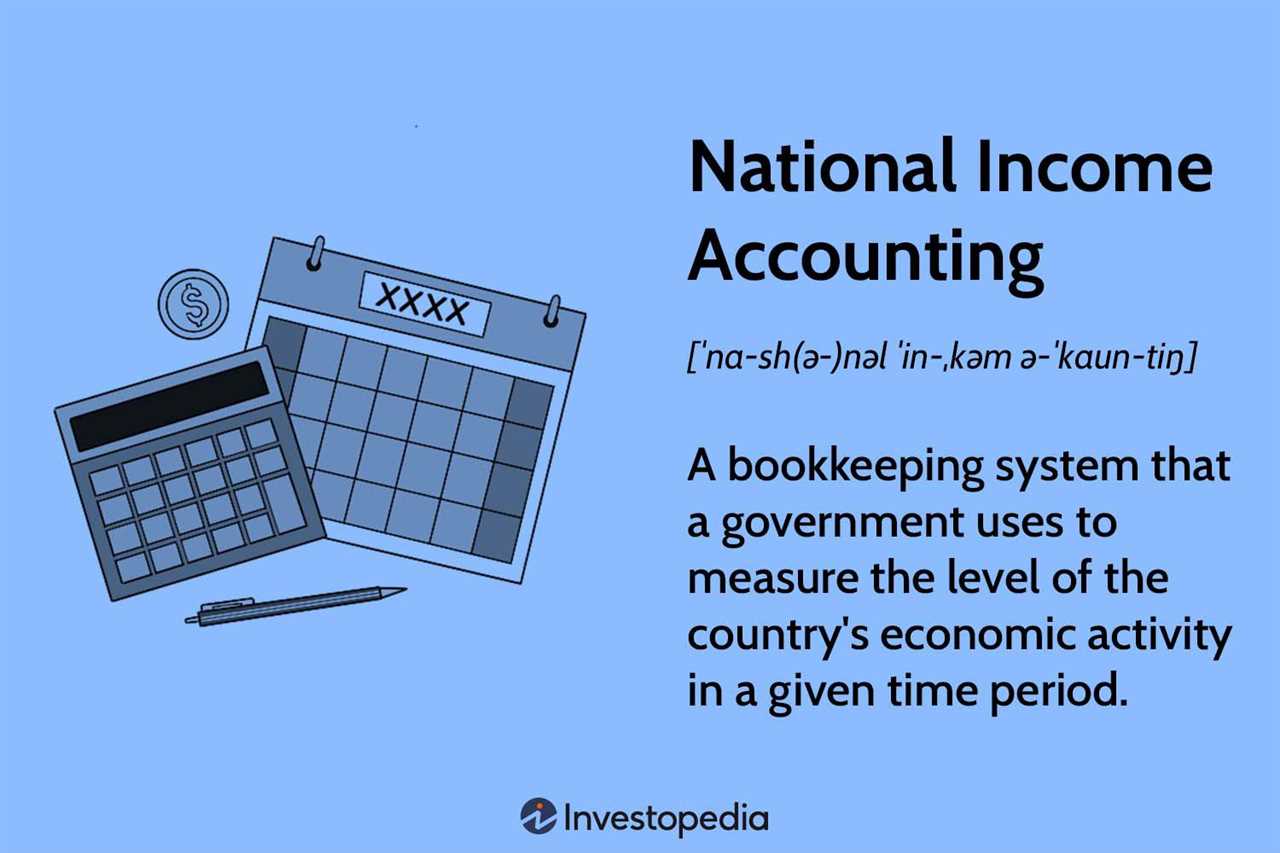Definition of National Income Accounting

National income accounting is a method used to measure the economic activity of a country over a specific period of time. It provides a systematic and comprehensive framework for analyzing and evaluating the overall economic performance of a nation.
Importance of National Income Accounting
By measuring and tracking various economic indicators, such as gross domestic product (GDP), national income accounting helps in assessing the effectiveness of economic policies, identifying areas of strength and weakness, and formulating strategies for sustainable economic growth.
Components of National Income Accounting
National income accounting comprises several key components that help in measuring and analyzing the economic activity of a country. These components include:
- Gross Domestic Product (GDP): GDP is the total value of all final goods and services produced within a country’s borders during a specific period of time. It is one of the most important indicators used in national income accounting.
- Personal Income: Personal income refers to the total income received by individuals from all sources, including wages, salaries, dividends, and government transfers.
- Disposable Income: Disposable income is the amount of income that individuals have available for spending or saving after paying taxes.
- Government Expenditure: Government expenditure includes all spending by the government on goods, services, and investments.
- Net Exports: Net exports represent the difference between a country’s exports and imports.
These components, when combined, provide a comprehensive picture of the overall economic activity and performance of a country.
Uses of National Income Accounting
National income accounting is used for various purposes, including:
- Assessing the overall economic performance of a country
- Comparing the economic performance of different countries
- Evaluating the impact of government policies on the economy
- Forecasting future economic trends
- Informing decision-making by policymakers, businesses, and investors
Process of National Income Accounting
Gross Domestic Product (GDP)
The first step in the process of national income accounting is calculating the Gross Domestic Product (GDP). GDP is the total value of all final goods and services produced within a country’s borders during a specific period, usually a year. It includes consumption, investment, government spending, and net exports (exports minus imports).
Income Approach
The income approach is another important component of national income accounting. It focuses on measuring the total income generated by the production of goods and services. This includes wages, salaries, profits, rents, and interest earned by individuals and businesses. By summing up all these income components, we can determine the total income generated within an economy.
Expenditure Approach
The expenditure approach is used to measure the total spending on goods and services within an economy. It includes consumption expenditure by households, investment expenditure by businesses, government spending on goods and services, and net exports. By summing up all these expenditure components, we can determine the total expenditure within an economy.
Balance of Payments
The balance of payments is an important concept in national income accounting. It measures the economic transactions between a country and the rest of the world. It includes the current account, which records the trade in goods and services, and the capital account, which records the flow of financial assets. The balance of payments helps to determine the overall economic position of a country and its impact on the national income.
Inter-Sectoral Transactions

Inter-sectoral transactions refer to the economic activities between different sectors of the economy. For example, the purchase of raw materials by a manufacturing company from the agricultural sector. These transactions need to be accounted for to avoid double counting of economic activity. National income accounting takes into consideration these inter-sectoral transactions to provide an accurate measure of the overall economic activity within an economy.
| Step | Description |
|---|---|
| 1 | Calculate the Gross Domestic Product (GDP) |
| 2 | Measure the total income generated (Income Approach) |
| 3 | Measure the total spending (Expenditure Approach) |
| 4 | Consider the balance of payments |
| 5 | Account for inter-sectoral transactions |
The process of national income accounting provides valuable insights into the overall economic performance of a country. It helps policymakers, economists, and businesses make informed decisions and develop strategies to promote economic growth and stability.
Real-life Examples of National Income Accounting
Here are some real-life examples that demonstrate the importance and application of national income accounting:
1. Gross Domestic Product (GDP)
GDP is one of the key indicators used in national income accounting. It measures the total value of all final goods and services produced within a country’s borders during a specific period. GDP provides a comprehensive overview of a nation’s economic output and is often used to compare the economic performance of different countries.
2. National Income
National income is another important measure derived from national income accounting. It represents the total income earned by individuals and businesses within a country. This includes wages, salaries, profits, rents, and interest. National income helps to assess the distribution of income within a country and provides insights into the standard of living of its citizens.
3. Consumption and Savings
4. Government Expenditure
National income accounting allows for the measurement of government expenditure, which includes spending on public goods and services, such as infrastructure, education, and healthcare. By analyzing government expenditure, policymakers can assess the impact of fiscal policies on the overall economy and make informed decisions regarding budget allocations.
National income accounting also takes into account international trade. By measuring exports and imports, economists can calculate the balance of trade, which represents the difference between the value of a country’s exports and imports. This information helps to assess a country’s competitiveness in the global market and its reliance on foreign trade.

Emily Bibb simplifies finance through bestselling books and articles, bridging complex concepts for everyday understanding. Engaging audiences via social media, she shares insights for financial success. Active in seminars and philanthropy, Bibb aims to create a more financially informed society, driven by her passion for empowering others.
